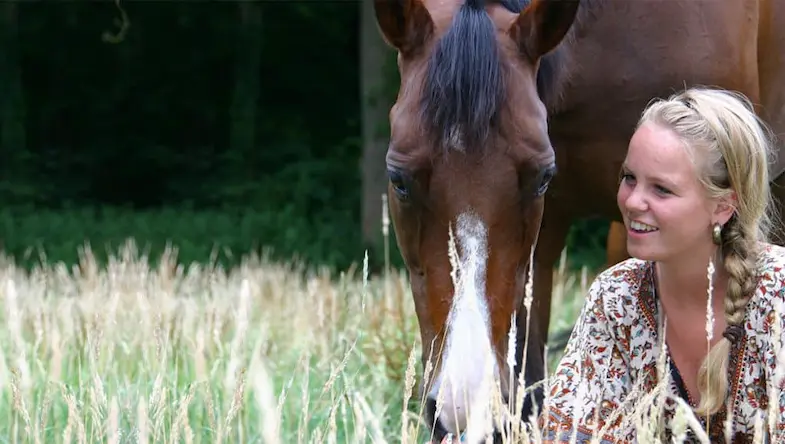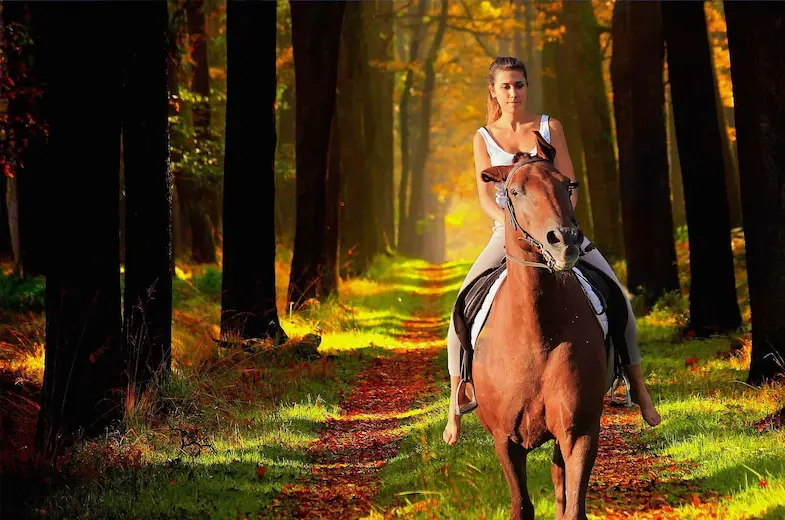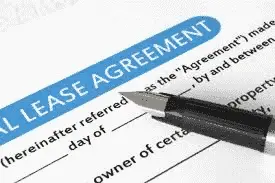Not everybody wants to have their own horse, nor is everybody able to do so, but if you still want to enjoy the benefits of horse ownership don’t worry, leasing may just be the perfect solution for you.
What does it mean to lease a horse?
The Collins English Dictionary definition of a lease states that its “a contract by which one party gives another the use or possession of land, buildings, property, etc” (or in this case a horse) “for a specified time and for fixed payments” which basically means that you’re paying the owner a fee to be able to effectively ‘own’ the horse for a predetermined period of time (or indefinitely if that’s what you’ve agreed). There are different types of leasing (which we’ll go into in more detail later) but they will determine how much you have to pay as well as what your responsibilities and duties are. If you share the lease with other people then you may also have some sort of rota that states when you can visit, look after and ride the horse.
What are the different types of leasing?
There are four main types of lease but there is also a horse share which, although not technically a lease is often said to be a leasing option. Within each leasing type, there can be a wide range of different conditions and clauses that will stipulate what you can and can’t do and in some cases when you can do it.
Full lease
As you might expect a full lease means that you effectively become the horse’s owner in every sense except legally. You will probably have to pay the board, veterinarian, and farrier fees as well as a monthly ‘leasing’ fee. In return for this, you will be able to visit, ride and show/compete whenever you want. Depending on the type of board you have you will also have to feed, turn out/bring in and muck out the horse, although some leases do also allow you to decide where to board the horse. If you want to know more about where to keep your horse then check out this article. People that have a horse on a full lease agreement are often said to have the horse on loan.
Partial lease
This is similar to a full lease except you are sharing the horse with at least one other person. Typically a partial lease involves up to three people but, while any number of people can share the lease, two is the norm. The advantage of a partial lease is that the fees are shared between all lessees but the downside is that you can’t just turn up and ride whenever you feel like it. In most cases, there’ll be a rota stating who can ride on what days, typically up to three times a week depending on the number of lessees.
Half lease
If you already have a horse but aren’t able to dedicate as much time as you’d like or if you want to reduce the cost of ownership then you might want to consider a half lease. This is where the owner will still ride and look after the horse but will only pay half of the fees and expenses. The rest of the cost will be paid by a lessee who will be able to exercise the horse for half of the week.
As I say this is more for horse owners who don’t want to sell their horse, in terms of lessee though this can be a great option because you’ll be sharing the horse with somebody who knows him really well and who you can turn to if you have any problems.
Pre-purchase lease
Pre-purchase leases are becoming more popular these days because they give you a chance to ‘try’ the horse out before you buy them. You will normally have a full lease agreement that lasts for at least three months, although they can last up to a year and even two on very rare occasions. The idea is that you get to know the horse as well as his quirks and foibles and whether or not the two of you work well together. At the end of the contract, you have the option to either buy the horse or, if you don’t feel the horse is right for you, walk away. Some owners may let you continue to lease the horse but this is very rare.
Horse share
This technically isn’t a lease, however, if you think you’re ready to own a horse but aren’t able to invest fully, both financially and time-wise, then this could be the perfect option for you. Horse sharing is almost identical to half leasing except that instead of leasing a horse and sharing the responsibilities with the owner, you buy a horse with somebody else. The two of you then jointly own the horse and share everything.
What are the pros and cons of leasing a horse?
Like everything in life, there are for’s and against leasing a horse and it certainly isn’t for everybody. Some people like the fact that they can essentially give the horse back when they’ve outgrown it, while others aren’t keen on the fact that they don’t actually own the horse.
Pros of leasing a horse
- Leasing can be a great way of being introduced into the world of horse ownership.
- Leasing is often cheaper than owning a horse, especially the initial upfront cost.
- If you want to compete, then leasing can be a relatively inexpensive way of getting a good horse with great prospects.
- When you outgrow the horse you don’t have to worry about selling it, you can simply end the lease.
Cons of leasing a horse
- Even if you’re the only person that has the horse on lease you don’t actually own it.
- If you don’t have first refusal on buying the horse then it could be sold without the owner letting you know.
- Unless you’ve agreed otherwise the owner may be allowed to exercise the horse whenever they want to.
- There can be limitations on what you are allowed to do, for example, you may not be allowed to compete on the horse.
What do I need to know before leasing a horse?
If you’ve decided that leasing is for you then unless you already know the horse and owner it can be a similar process to buying a horse. Local tack shops, barns, and vets can be a great place to find horses that are available for leasing but if not then equestrian magazines and websites often have lots of adverts for lease horses. The start of the fall college term can be a good time to look for a horse, especially if you’re looking for an intermediate level horse. The reason for this is that as people go back to college they’re not able to dedicate the same amount of time to their horse that they did during the summer, yet they don’t want to sell the horse.
Take your time when looking for the right horse and never agree to lease a horse without having seen and ridden it beforehand. Make a shortlist of horses that you like the sound of then contact the owners, don’t bombard them with questions immediately, initially, you just want to find out if the horse is still available and let them know you’re potentially interested.
Once you’ve spoken to the owners you can then start to ask more about the horse and whether there would be any limitations (such as competing or activities you can’t undertake), it’s also important to arrange to visit the horse.
If this is the first time you’ve leased a horse then I would suggest taking a trainer or instructor with you when you visit. They will understand your needs and abilities so will be able to advise you on whether the horse is a good fit for you. While you shouldn’t be afraid to ask questions your trainer/instructor will also be able to ask questions that you might not have thought about.
When you’ve found a horse that you like I think it’s important to go back for a second visit, ideally unannounced if possible. If the horse isn’t right, or there are any problems, then this will help to show that.
If you’re are a first time lessee then you may find this article helpful, I know it’s about buying a horse instead of leasing but the principles are the same.
CONTRACT! Sorry to shout but this is the most important thing when leasing a horse but it’s sadly often overlooked. Before deciding to lease a horse you and the owner need to agree on a contract that will not only set out what is expected from both of you but will also protect you both if something goes wrong or there are any problems.
How to negotiate a horse lease?
It can be scary when it comes to negotiating a leasing agreement but it doesn’t have to be. Some people use a lawyer to draw up a contract and although it’s a good idea to have the agreement legally checked, good communication is the basis for all negotiations and will help to prevent problems further down the line.
An agreement should set out who is responsible for what as well as what is classed as unreasonable. If you really don’t know where to start with a contract then have a look on Google, a quick search for horse lease agreement templates will give you a list of different templates that can help to get you started.
What to do next?
Once you’ve successfully agreed a contract with the owners and you have both signed it the next step is to move the horse, unless of course, they’re staying at the same barn. If you are moving the horse and don’t have your own trailer then you’ll need to find somebody who can help. A lot of owners will do it for you (sometimes for a fee) but if not then speak to other owners about who they use to transport their horse, they’ll be able to give you first-hand experience which is great.
Now that you’re leasing a horse it’s time for the two of you to have a world of fun, from bonding together to online training, the possibilities are endless, so what are you waiting for? Get out there and enjoy your new horse.
I hope you found this article helpful. If you did I’d be grateful if you could share it please as it would really help me.
Recommended products
Over the years I have tried hundreds of different horsey products, from various blankets and halters to different treats. Some I’ve loved, others I’ve hated but I thought I’d share with you my top all-time favorite products, the ones I never leave the yard without. I’ve included links to the products (which are in no particular order) that I really think are great.
- Horse Knots by Reference Ready – If you’re like me and enjoy pocket reference guides then you’ll love this knot tying guide. These handy cards can easily fit in your pocket or attach to the saddle for quick reference. They’re waterproof, durable and are color coded to make them easy to follow.
- Mane ’n Tail Detangler – Even if you never show your horse you’ll need to detangle his tail from time to time (and possibly his mane too) which is always a challenging chore! I’ve found that if I run a little bit of detangler through my horse’s tails every few days it stops them from getting matted up and makes combing them easy, even if they’re coated in mud. I don’t know if I should admit to this or not but it also works wonders on my hair.
- TAKEKIT Pro clippers – Over the years I’ve tried a lot of different clippers and while some were obviously better than others I found these to be by far the best. They are heavier than a lot of other clippers but for me, that’s a good thing, it makes them feel more sturdy and hardwearing. On top of that they have a range of speeds so are just as good for clipping your horse’s back as they are his face. I also like the fact that they come in a handy carry case but that’s not for everybody. The company that makes them is super good and incredibly helpful too, a real bonus these days. The only thing I wasn’t keen on was the fact that it doesn’t come with any oil, but that’s not a major problem as it’s not difficult to buy lubricant.
- Shire’s ball feeder – There are so many boredom buster toys out there but I like to use these every day, regardless of whether or not my horses are bored. I find that it helps to encourage my horses to problem solve by rewarding them with treats (or pieces of fruit) but it also mimics their natural grazing behavior which helps to keep them calm and de-stressed.
- Horse safe mirror – This is a strange one that many people are surprised about but I like to put horse safe mirrors in the trailers as well as in the quarantine stalls. It helps to prevent the feeling of isolation by giving the impression of other horses being around. Being herd animals horses can get extremely stressed when they feel that they’re on their own but with these stick-on mirrors, they believe that at least one other horse is with them.
- Rectal thermometer – I know this isn’t glamourous at all but it’s vital for your horse’s well-being to be able to check their temperature and a rectal thermometer is the easiest way of doing this which is why I’ve added it to the list.
Shopping lists
I’ve also put together a few shopping lists of essential items that I’ve found helpful over the years. I’ve broken the lists down into different categories rather than put everything in one massive list 😉




